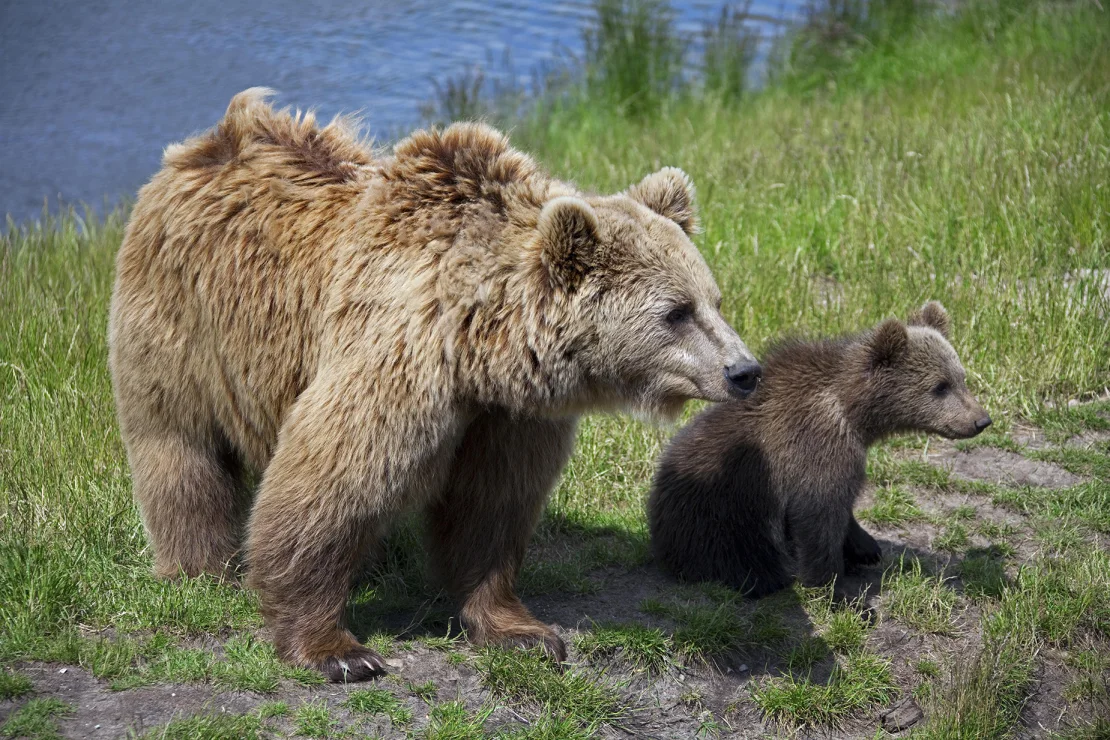About 20% of Sweden’s brown bear population could be killed this hunting season after licenses were issued for 486 of the animals to culled, despite an outcry from conservation groups.
There’s currently an estimated 2,450 brown bears roaming the Swedish countryside, a number that has decreased in recent years because of increased licensed hunting, according to official figures released in 2023. Given the rapid decline of the bear population since 2022, that number could already be even lower.
For conservation group Sweden’s Big Five, the decision to continue issuing such high numbers of hunting licenses represents “100 years of brown bear conservation progress… being undone at an alarming speed,” it said in a statement.
“Wild carnivores have to function in the ecosystem and so we’re not just talking about how many of these animals can be tolerated by humans. It’s also about how many do we need for the ecosystem to function,” Magnus Lundgren, a director at the Wild Wonders Foundation, which runs Sweden’s Big Five, told CNN Wednesday.
By the early 1900s, brown bears were almost extinct in Sweden after decades of policies that sought to eradicate them from the country.
Since then, however, strict protective measures have allowed them to reestablish themselves in their native habitat, and their population reached a peak of 3,298 in 2008.
“There has been a hundred years of trying to increase the numbers, but we see a change in the policy from the political government that is really aggressive now the last few years,” Lundgren added.
Decisions on the number of hunting licenses issued are now taken by county administrative boards, Hanna Ek, deputy head of unit at Sweden’s Environmental Protection Agency, told CNN, adding that the total number across the country this year added up to 486.
By law, several requirements must be met beforehand, Ek added, without stipulating their exact nature, and these decisions can be appealed.
“Licensed hunting is one of several tools in the Swedish management of large carnivores,” she said.
But for Lundgren and Steffan Widstrand, managing director of the Wild Wonders Foundation, the extensive use of licensed hunting is a capitulation of sorts to hunters, who have other reasons for killing bears than to manage the population.
“There are two reason hunters kill bears,” Widstrand told CNN. “One is because it’s fun or it’s exciting and there’s a macho dimension to it, I must say. And the other reason is because they want to get rid of them, as not to compete, because bears also eat moose or elk and… that’s the number one prey that (hunters) would like to kill.”
Similar policies toward wolves and lynx have also prompted an outcry from conservation groups. The Swedish Carnivore Association even filed a complaint against the country’s government for its lynx hunting policies in April, claiming that it contradicted the EU’s Habitats Directive, which classifies lynx, bears and wolves as “in need of strict protection.”
Due to these policies and the government’s recent decision to allow almost 500 hunting licenses, Sweden’s Big Five claims that the government intends to reduce the brown bear population “as close as possible to a defined minimum level… which would mean about 1,400 bears.”
Brown bears are particularly “sensitive to a high hunting pressure,” Jonas Kindberg, leader of the Scandinavian Bear Project and a researcher at the Swedish University of Agricultural Sciences, said in a statement.
“Bears take three to four years to mature, they have only a few cubs at a time and only every two to three years,” he added. “During the hunt, it is very difficult to tell females from males, and the females are much more valuable to the population. Therefore, you risk to end up in a situation that may take a very long time to repair.”
Instead of hunting brown bears, Widstrand and Lundgren said there are other strategies that can allow them to co-exist alongside humans like using fences to separate them from livestock or encouraging ecotourists to watch the wildlife, bringing money into the local communities.


Leave a Reply